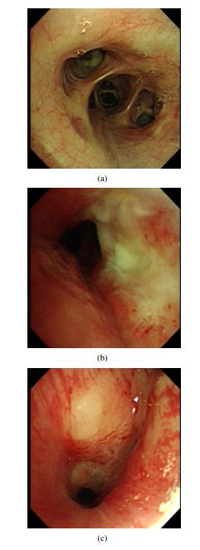
Bronchoscopy inspection, as a follow-up procedure next to the radiological imaging, plays a key role in the diagnosis and treatment design for lung disease patients. When performing bronchoscopy, doctors have to make a decision immediately whether to perform a biopsy. Because biopsies may cause uncontrollable and life-threatening bleeding of the lung tissue, thus doctors need to be selective with biopsies. In this paper, to help doctors to be more selective on biopsies and provide a second opinion on diagnosis, we propose a computer-aided diagnosis (CAD) system for lung diseases, including cancers and tuberculosis (TB). Based on transfer learning (TL), we propose a novel TL method on the top of DenseNet: sequential fine-tuning (SFT). Compared with traditional fine-tuning (FT) methods, our method achieves the best performance. In a data set of recruited 81 normal cases, 76 TB cases and 277 lung cancer cases, SFT provided an overall accuracy of 82% while other traditional TL methods achieved an accuracy from 70% to 74%. The detection accuracy of SFT for cancers, TB, and normal cases are 87%, 54%, and 91%, respectively. This indicates that the CAD system has the potential to improve lung disease diagnosis accuracy in bronchoscopy and it may be used to be more selective with biopsies.

